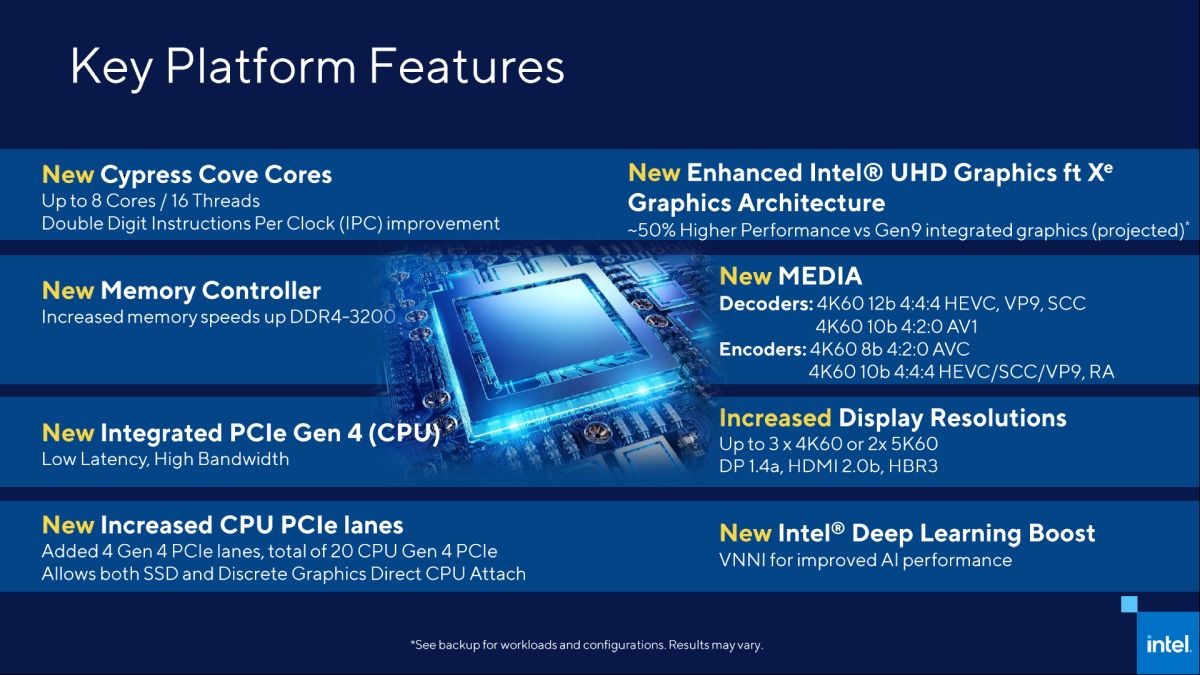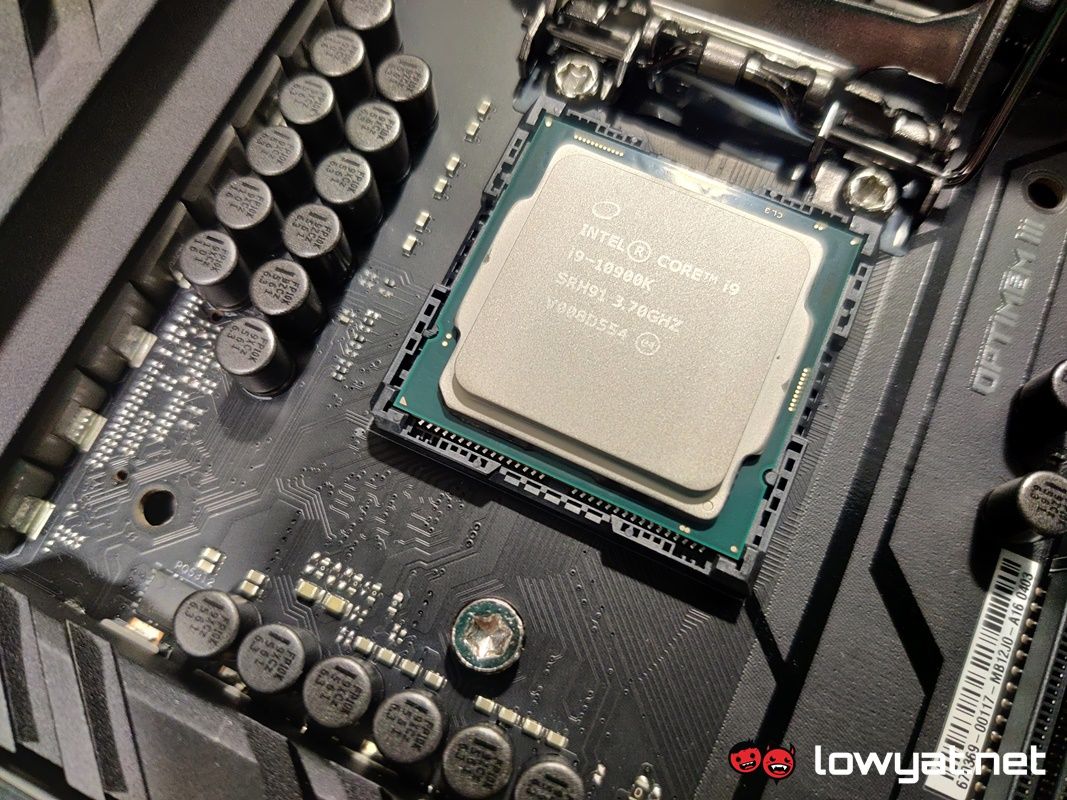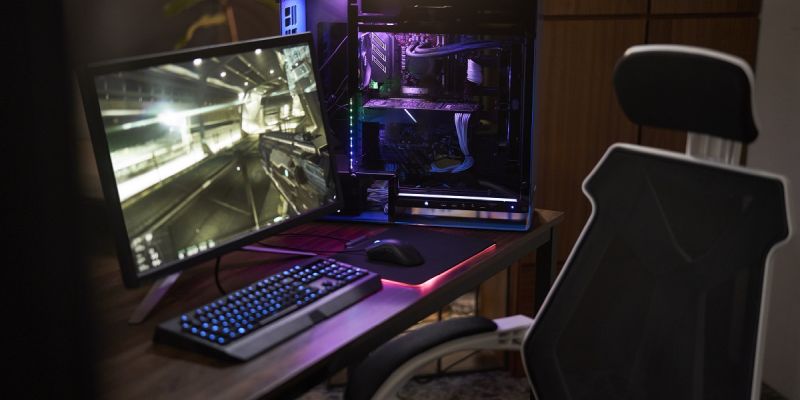Intel seems to have let the cat out of the bag about its 11th generation Rocket Lake-S processors. The semiconductor maker recently posted a chunk of information about the processors and architecture on its official page.
As a start, we now know that Rocket Lake-S will introduce a new desktop CPU architecture known as Cypress Cove. According to the slides, it seems that the top-of-the-line CPU of the series will have an 8-cores, 16-thread layout; a core count that remains unchanged since Intel’s Core i9-9900K and 10th generation Comet Lake-S Core i9-10900K CPUs.
What will be different, as per the same Intel slide, is that CPUs based on the new Cypress Cove architecture will have double-digit improvements with its Instructions Per Clock (IPC). Moreover, Rocket Lake-S will be the first to introduce enhanced UHD Graphics based on Intel’s Xe GPU architecture, that it says will have up to 50% better performance than the current Xe iteration.

Unsurprisingly, Intel’s slide also points out that its 11th generation CPUs will finally feature PCIe Gen4 integration, a point that has reaffirmed by the silicon maker several times before this. Additionally, it also says that its CPUs will also ship out with an increase number of PCIe lanes. Specifically, up to 20 CPU PCIe Gen4 lanes. New to the list is the introduction of an AI integration that Intel calls Deep Learning Boost.
Intel’s slides also mention that its 11th generation Rocket Lake-S series CPU will ship out with a new Intel 500 Series chipset. While this move is par for the course with every new CPU lineup, this does run contra to initial reports that the upcoming processor lineup would be compatible with the current 400 series chipset.

Guess we’ll have wait until the first quarter of 2021 to find out, which is when Intel is expected to launch its next-generation CPU.
(Source: Intel)
Follow us on Instagram, Facebook, Twitter or Telegram for more updates and breaking news.



